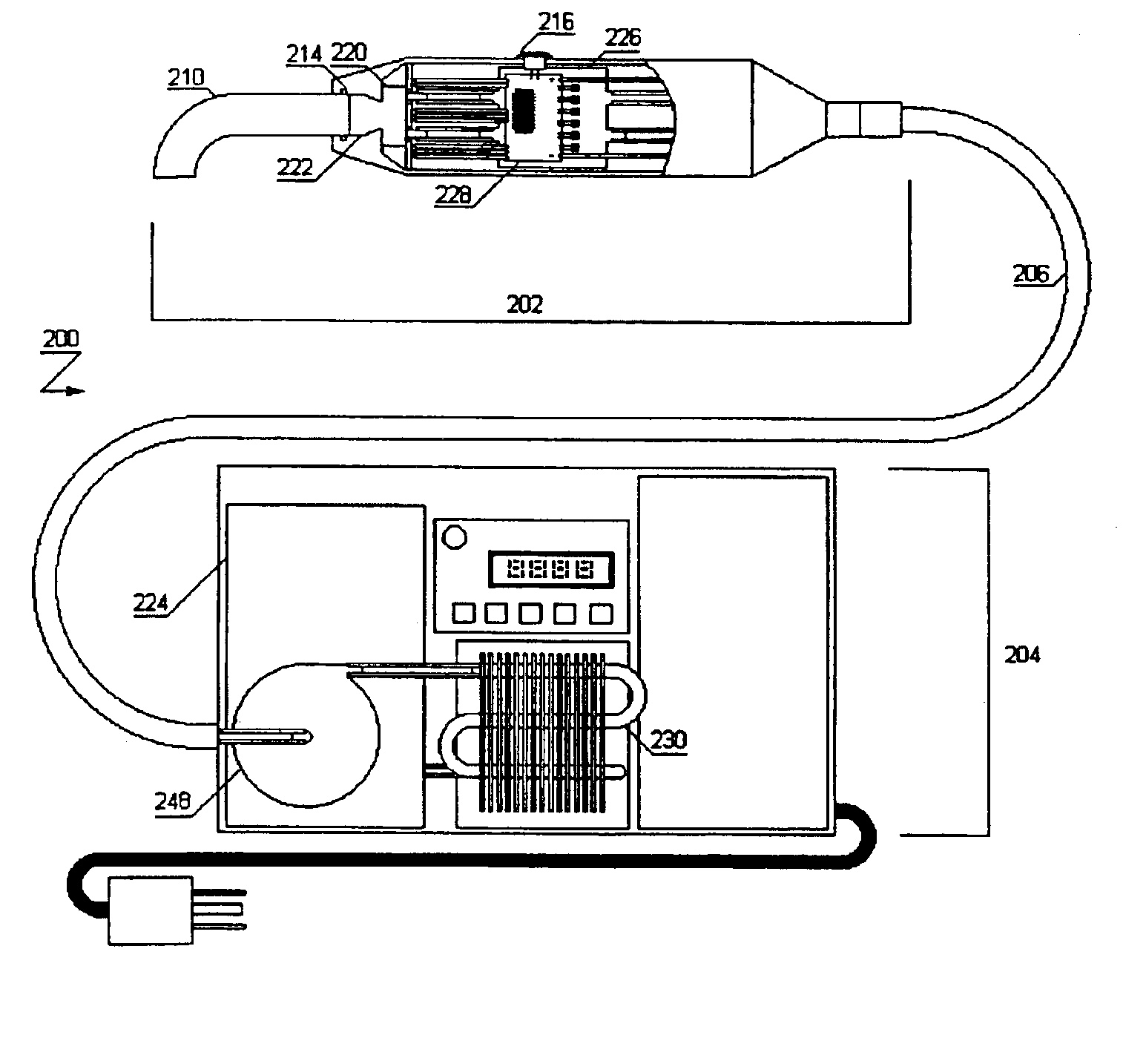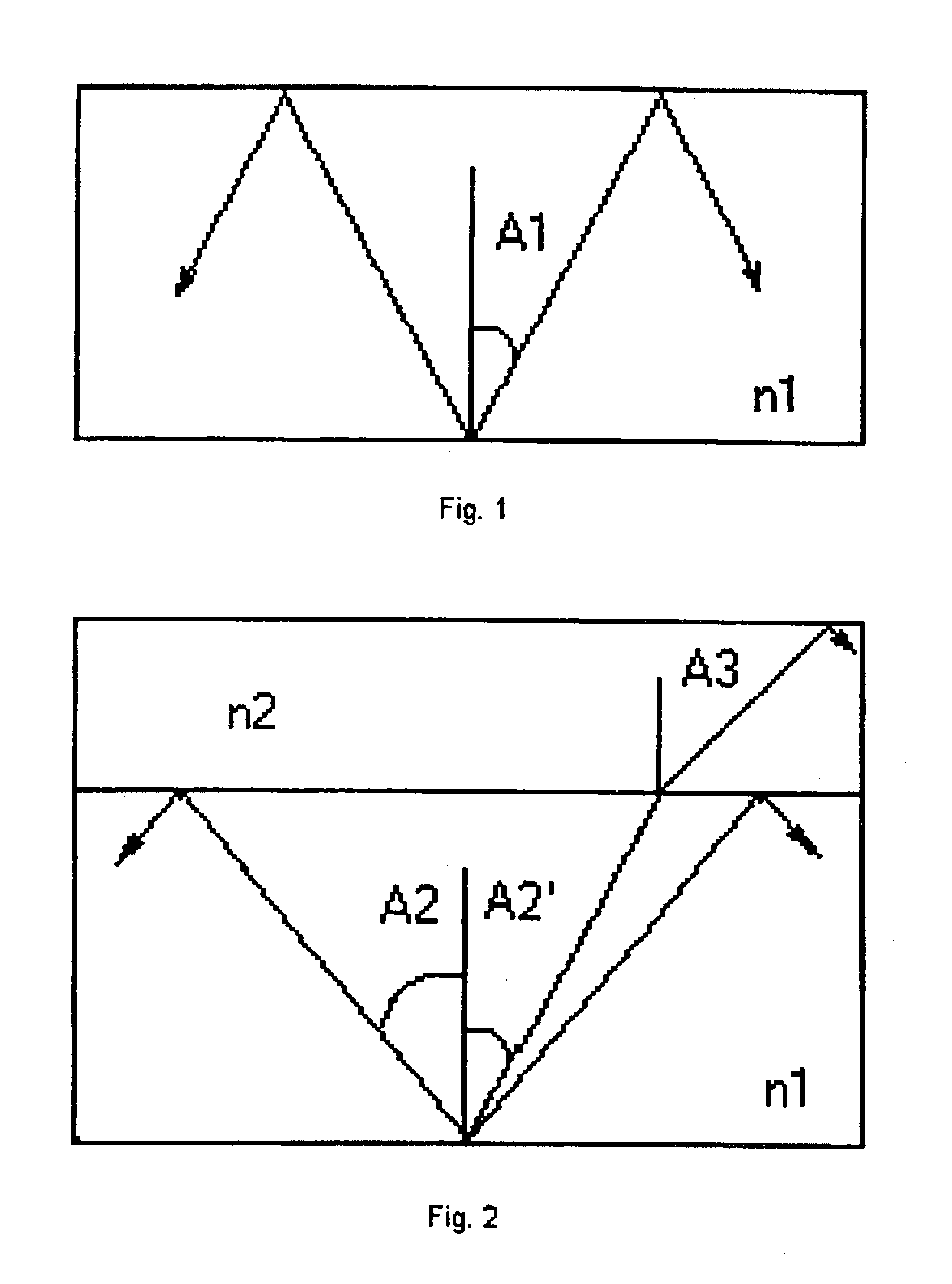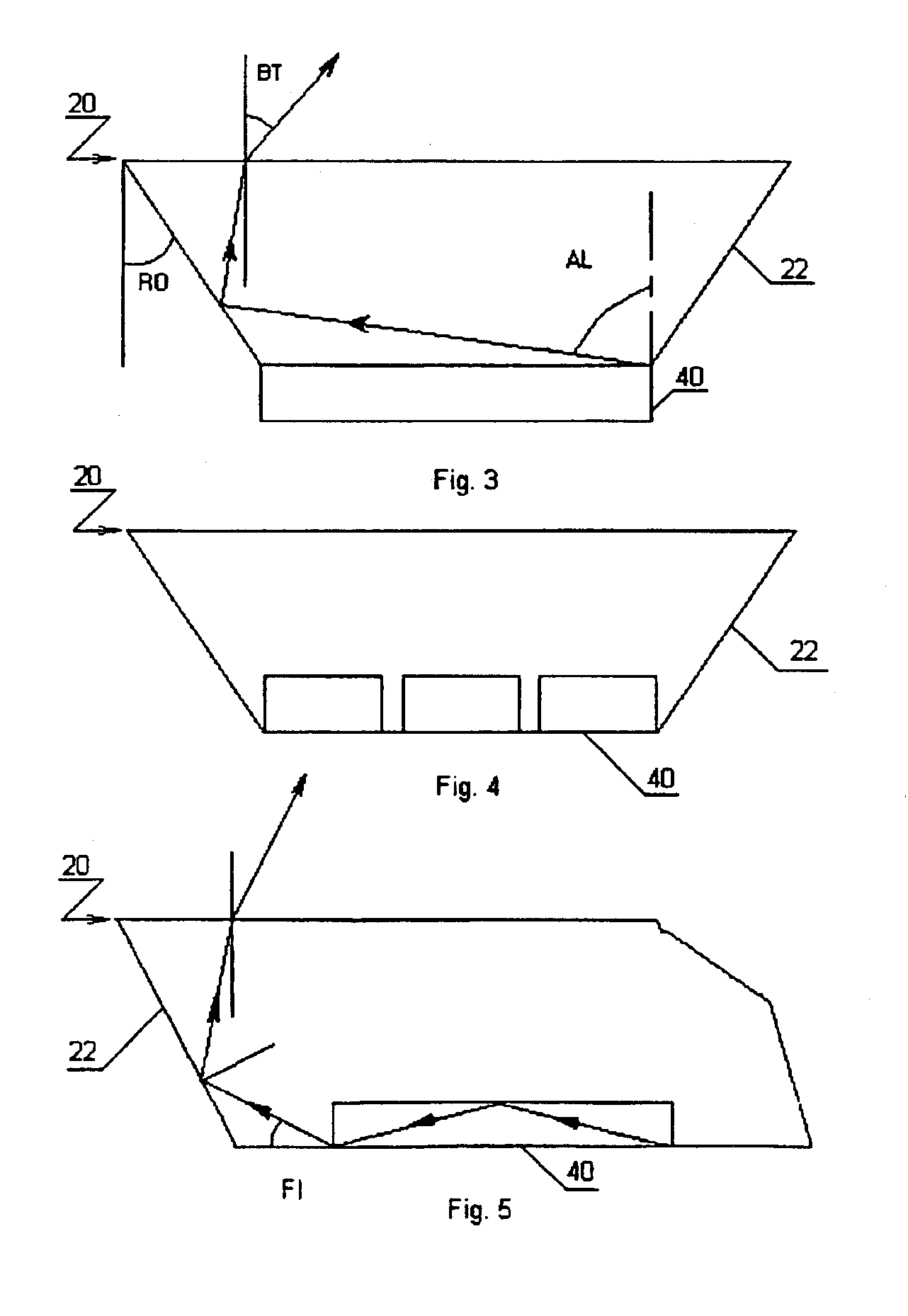LED curing light
a curing light and led technology, applied in boring tools, dental tools, dental prosthetics, etc., can solve the problems of high light beam divergence, low light output intensity, and low light output intensity of led curing lights
- Summary
- Abstract
- Description
- Claims
- Application Information
AI Technical Summary
Benefits of technology
Problems solved by technology
Method used
Image
Examples
Embodiment Construction
[0034]In order to more clearly understand the effect of the light output of LEDs, or a matrix of LEDs, it is first useful to consider the output.
[0035]For the sake of simplicity, the following discussion assumes that the LED light output is a hemispherical shape. The following figures illustrate sections through a cone showing the angles of the rays of emitted light. Accordingly, FIG. 1 indicates that from the total amount of light, originated within an LED, only the portion within the spherical angle of + / − A1 as shown in FIG. 1 can escape into the ambient air through the light emitting surface (hereinafter referred to as the forward facing surface) of the die. The value of the angle A1 is given by the equation: sin(A1)=1n1(1)
where n1 is the index of refraction of the material of the LED die.
[0036]The efficiency of light extraction is given by the equation:
Ef=1−cos(A1) (2)
In the case of blue LEDs, n1=2.4. A1 is about 25° and the Ef=9.4%. If the ray from the die escapes into a ma...
PUM
 Login to View More
Login to View More Abstract
Description
Claims
Application Information
 Login to View More
Login to View More - R&D
- Intellectual Property
- Life Sciences
- Materials
- Tech Scout
- Unparalleled Data Quality
- Higher Quality Content
- 60% Fewer Hallucinations
Browse by: Latest US Patents, China's latest patents, Technical Efficacy Thesaurus, Application Domain, Technology Topic, Popular Technical Reports.
© 2025 PatSnap. All rights reserved.Legal|Privacy policy|Modern Slavery Act Transparency Statement|Sitemap|About US| Contact US: help@patsnap.com



